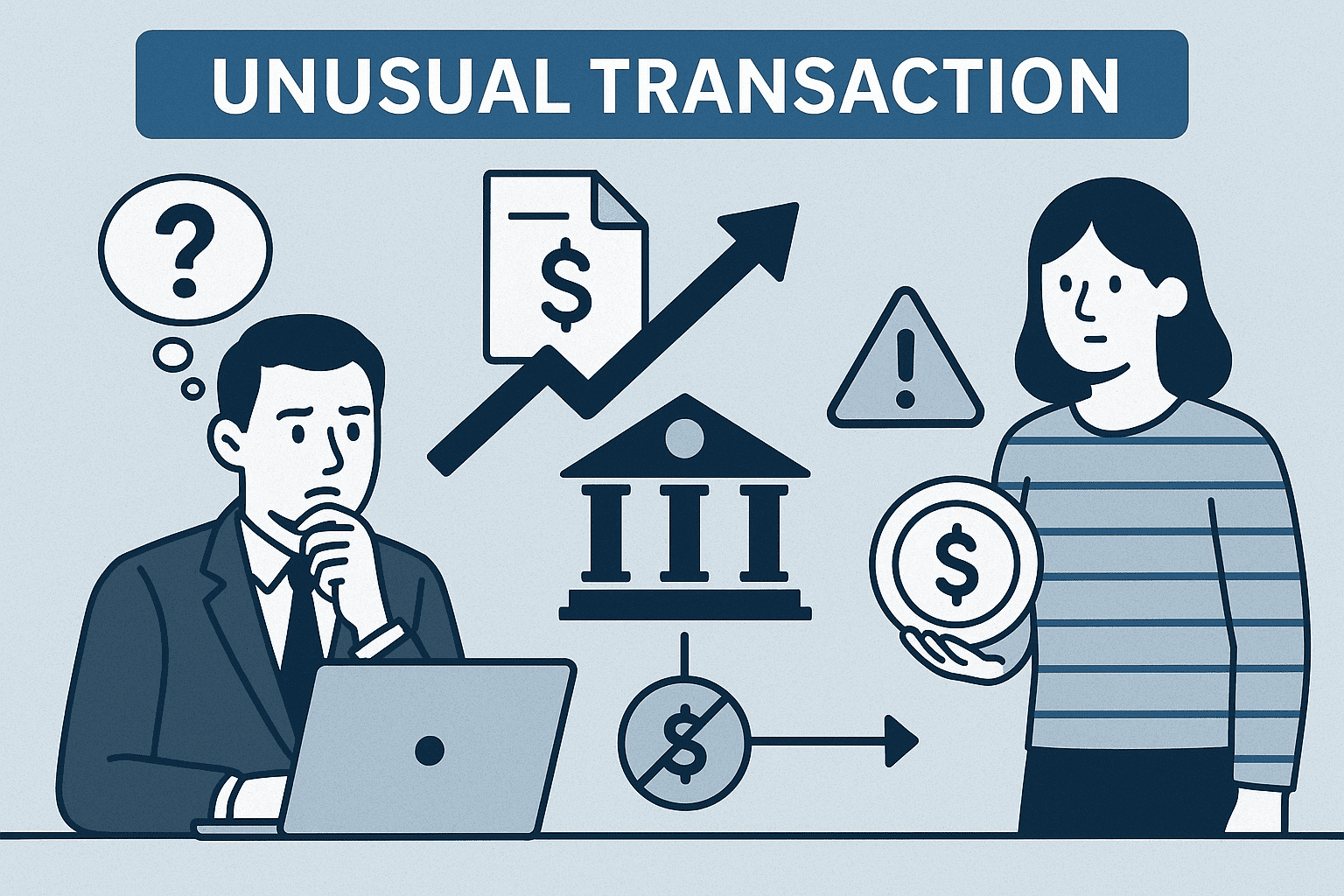#QuickbiteCompliance day 286
💡 Unmasking the Stealth Tactics: How Criminals Exploit Unusual Transactions
Financial criminals are masters of disguise, constantly evolving their methods to fly under the radar. One of their most potent weapons? Transactions designed to circumvent reporting thresholds, defy account history, or mismatch expected behavior . These “red flags” are not just anomalies—they are deliberate strategies to launder money, finance terrorism, or commit fraud. Here’s how they operate—and how we can fight back:
### 🔍 3 Stealth Tactics in Action
1. Micro-Smurfing 2.0 :
Criminals split large illicit sums into tiny, sub-threshold transactions across multiple platforms (e.g., digital wallets, fintech apps). By staying below $10,000 thresholds, they evade Currency Transaction Reports (CTRs). Example: A criminal network moves $500K via 100+ $4,900 deposits across 20 accounts in minutes .
2. Synthetic Identity “Legitimacy” :
Fraudsters use AI-generated synthetic identities to open accounts mimicking “low-risk” profiles. Once established, they suddenly wire large sums to high-risk jurisdictions—behavior wildly inconsistent with the account’s “persona” .
3. Real-Time Payment Exploitation :
Instant payment systems (e.g., FedNow, SEPA) enable criminals to move funds before monitoring kicks in. Example: A “dormant” corporate account suddenly sends 50 real-time payments to a sanctioned country—deviating entirely from its historic activity .
### ⚙️ Why Traditional Systems Fail
– Rule-based alerts miss sophisticated patterns (e.g., structuring across platforms) .
– Data silos prevent connecting dots between fraud and AML teams .
– Static risk models overlook behavioral deviations (e.g., a retail account behaving like a crypto exchange) .
### 🛡️ Fighting Back: Next-Gen Defense Strategies
1. Behavioral Analytics & AI :
Machine learning baselines individual account behavior (e.g., “User A logs in weekly; suddenly logs in 50x/day”). This spots deviations rule-based systems ignore, cutting false positives by 40% .
2. FRAML Integration :
Merge fraud and AML operations. Example: A mule account flagged for “unusual beneficiary payments” by AML teams can cross-reference fraud systems detecting account takeover attempts .
3. Collaborative Defense :
Share anonymized threat intelligence across institutions. A “smurfing network” detected at one bank can be blocked industry-wide via privacy-preserving federated learning .
💥 The Bottom Line :
Criminals innovate—so must we. By replacing siloed, reactive systems with unified, AI-powered, and collaborative frameworks, we turn the tide against financial crime.
#AML #FinancialCrime #TransactionMonitoring #InclusiveRegtech #OpenSourceAML #FinTech #AI #Compliance #AntiMoneyLaundering #100HariNulis
📚 Deepen your expertise : Explore the [AML Glossary of Terms](https://www.acams.org/en/resources/aml-glossary-of-terms).

